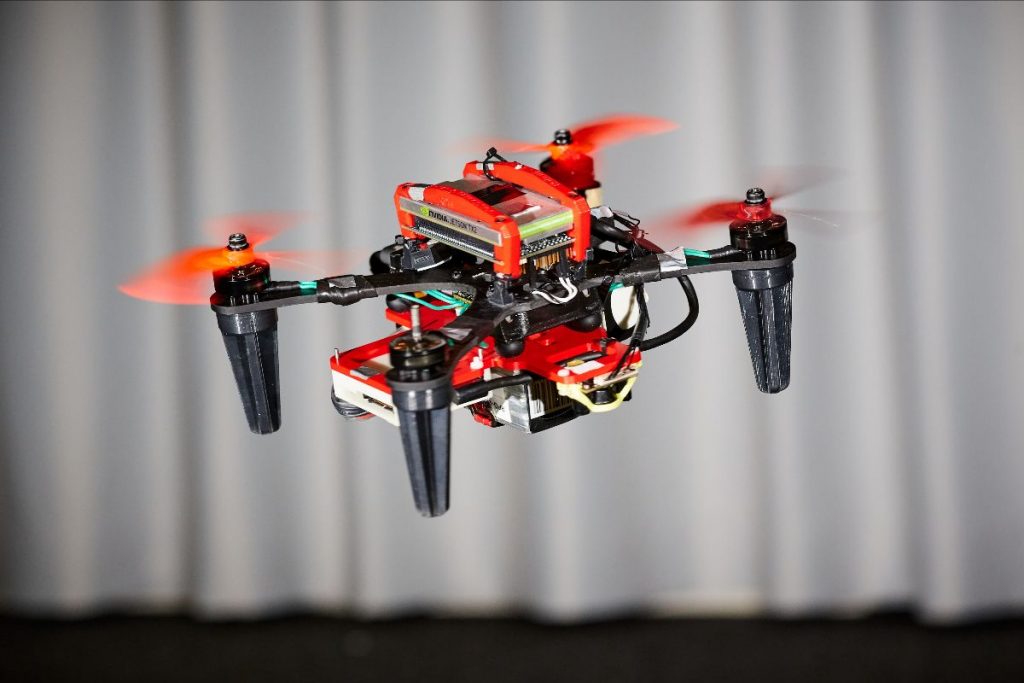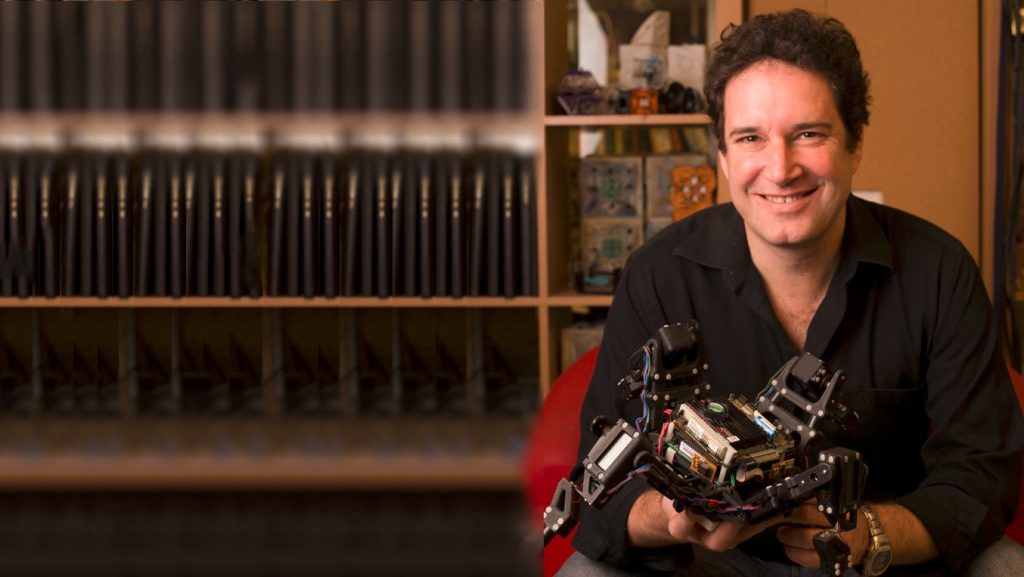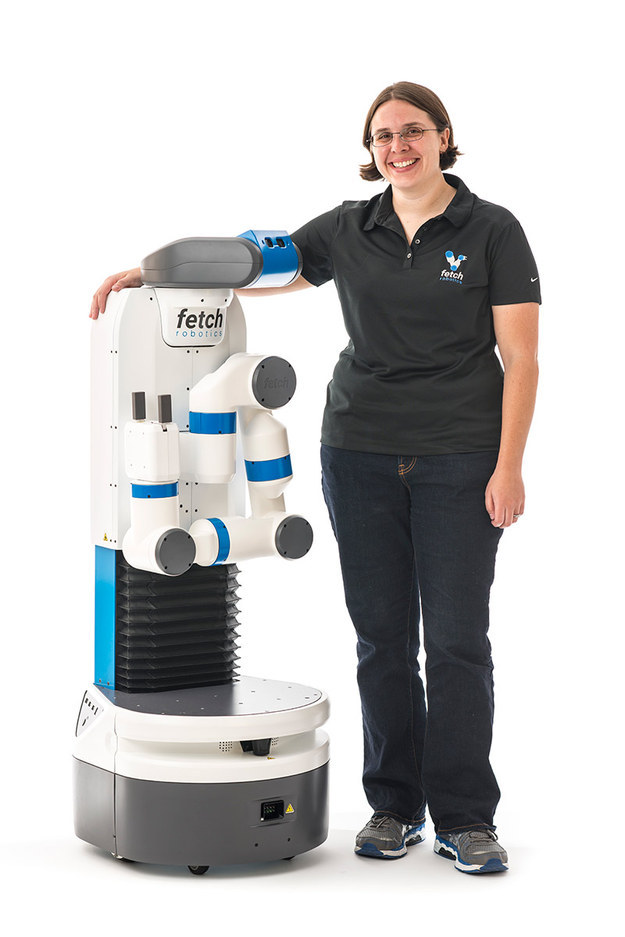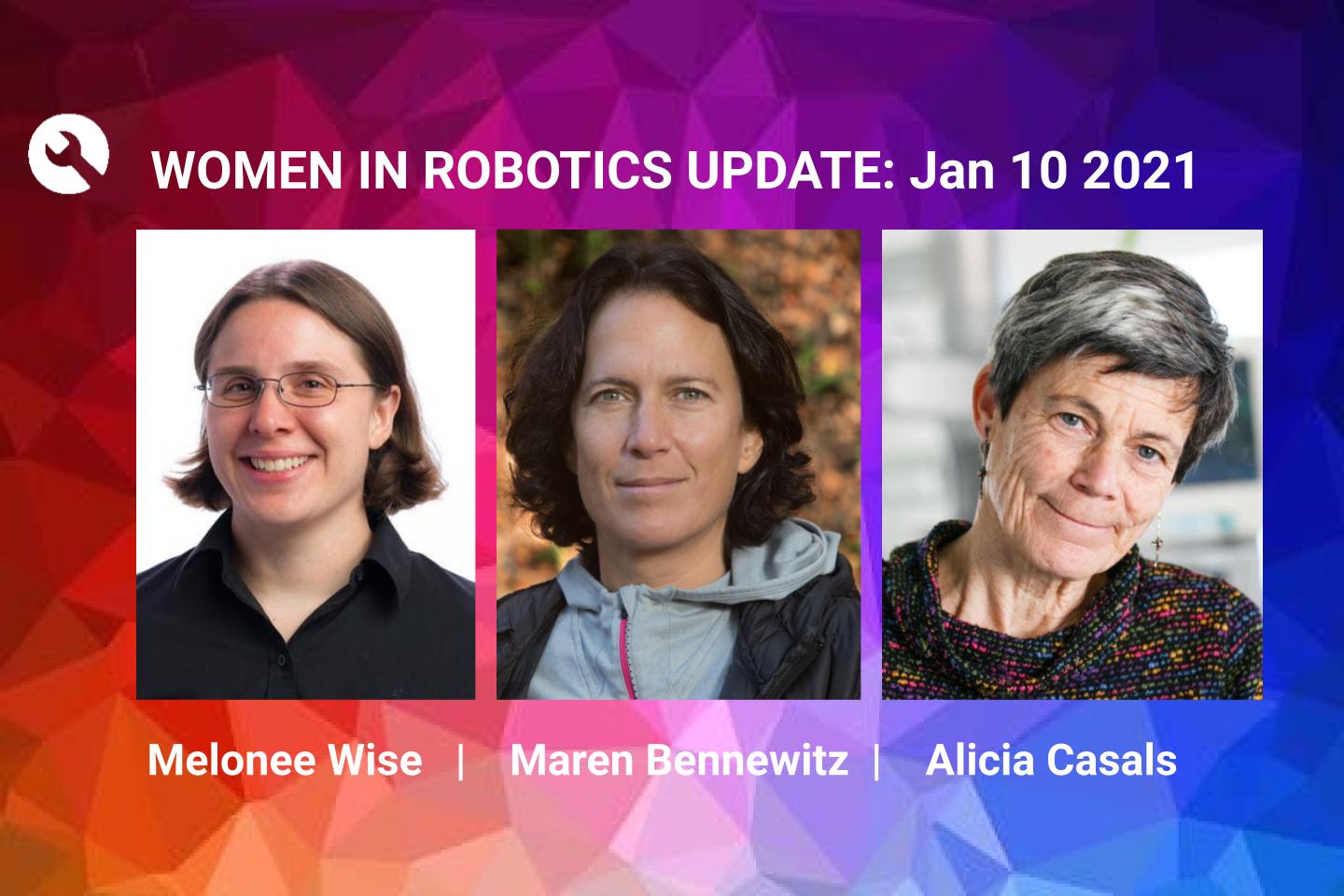How to keep drones flying when a motor fails

Robotics researchers at the University of Zurich show how onboard cameras can be used to keep damaged quadcopters in the air and flying stably – even without GPS.
As anxious passengers are often reassured, commercial aircrafts can easily continue to fly even if one of the engines stops working. But for drones with four propellers – also known as quadcopters – the failure of one motor is a bigger problem. With only three rotors working, the drone loses stability and inevitably crashes unless an emergency control strategy sets in.
Researchers at the University of Zurich and the Delft University of Technology have now found a solution to this problem: They show that information from onboard cameras can be used to stabilize the drone and keep it flying autonomously after one rotor suddenly gives out.
Spinning like a ballerina
“When one rotor fails, the drone begins to spin on itself like a ballerina,” explains Davide Scaramuzza, head of the Robotics and Perception Group at UZH and of the Rescue Robotics Grand Challenge at NCCR Robotics, which funded the research. “This high-speed rotational motion causes standard controllers to fail unless the drone has access to very accurate position measurements.” In other words, once it starts spinning, the drone is no longer able to estimate its position in space and eventually crashes.
One way to solve this problem is to provide the drone with a reference position through GPS. But there are many places where GPS signals are unavailable. In their study, the researchers solved this issue for the first time without relying on GPS, instead using visual information from different types of onboard cameras.
Event cameras work well in low light
The researchers equipped their quadcopters with two types of cameras: standard ones, which record images several times per second at a fixed rate, and event cameras, which are based on independent pixels that are only activated when they detect a change in the light that reaches them.
The research team developed algorithms that combine information from the two sensors and use it to track the quadrotor’s position relative to its surroundings. This enables the onboard computer to control the drone as it flies – and spins – with only three rotors. The researchers found that both types of cameras perform well in normal light conditions. “When illumination decreases, however, standard cameras begin to experience motion blur that ultimately disorients the drone and crashes it, whereas event cameras also work well in very low light,” says first author Sihao Sun, a postdoc in Scaramuzza’s lab.
Increased safety to avoid accidents
The problem addressed by this study is a relevant one, because quadcopters are becoming widespread and rotor failure may cause accidents. The researchers believe that this work can improve quadrotor flight safety in all areas where GPS signal is weak or absent.
Warehouses Turn to Automation to Meet Permanent Peak Demand
A journey into Optimization algorithms for Deep Neural Networks
Taking the lab into the ocean: A fleet of robots tracks and monitors microbial communities
Fish-inspired robots coordinate movements without any outside control
Wielding a laser beam deep inside the body
How to keep drones flying when a motor fails
Samsung robot feeds you and helps with the laundry
IEEE RAS Soft Robotics Podcast with Hod Lipson: Can we design self-aware robots?

Interesting discussion with Hod Lipson, head of Creative Machines Lab, Columbia University in New York. Can robots be self-aware? Can they design other robots and self-repair? Why should we evolve robots to do tasks that animals do so well? Why don’t we have useful autonomous robots in the real world yet? Find out Hod’s answers to these questions and updates on VoxCAD development for designing and simulation of soft robots in this episode of the IEEE RAS Soft Robotics Podcast.
What’s more, Hod gave his personal advice to roboticists being interviewed for an assistant professorship and to 1st-year robotics PhD students looking for a thesis topic, and he also commented on his approach to the ethical dilemma of military funding scientific research. I hope you enjoy listening to the episode! You can check Hod Lipson’s portfolio here: https://www.hodlipson.com/
You can also listen to this podcast on Spotify and Apple Podcasts, and explore support options on Patreon.
Examples of Rescue Robotics Changing Emergency Response Times
CES 2021: The robots are still coming. These are some of the best ones on the way
Incremental Steps to Creating Value With Industrial Data Analytics
Pandemic’s robot ‘heroes’ highlight their value at tech show
Women in Robotics Update: Melonee Wise, Maren Bennewitz, Alicia Casals
Introducing the seventh post in our new series of Women in Robotics Updates, featuring Melonee Wise, Maren Bennewitz and Alicia Casals and from our first “25 women in robotics you need to know about” list in 2014. These women have pioneered foundational research in robotics, created organizations of impact, and inspired the next generations of robotics researchers, of all ages.
 |
Melonee Wise
CEO of Fetch Robotics
Melonee Wise(featured in 2014), now a CEO of Fetch Robotics has been designing, building, and programming robotic hardware for an autonomous boat, autonomous car, personal robot platforms, battlebots, and several low cost platforms since 19 years. At Fetch Robotics, she and her team provide the best AMR or Autonomous Mobile Robot solutions for the logistics industry through a fleet of products that provide ‘On Demand Autonomy’. Fetch Robotics was also the first winner of Overall Excellence Award in the Silicon Valley Robotics ‘Good Robot’ Industry Awards in 2020. Wise was recognized by Silicon Valley Business Journal as 40 under 40 and by Technology Review TR35 as a ’40 female founders who crushed it’ in 2016. She also received the Women of Influence in 2017 Silicon Valley Business Journal. She has more than 4 Patents and more than 20 published articles. Wise received the Distinguished Alumni Award from University of Illinois at Champaign Urbana in 2016. After the ceremony Wise shared that, “Women in Engineering is definitely a small community. There’s only so many women in engineering and there’s only so many engineers in robotics. So you’re looking at a pretty thin cross-section of a population that is not as diverse as we all hope it would be. And so sometimes it can be very challenging. But I actually think it’s harder as a start-up entrepreneur to be a woman than it is to be potentially a roboticist.” |
 |
Maren Bennewitz
Professor at the University of Bonn
Maren Bennewitz (featured in 2014) is a professor for humanoid robots and vice rector for IT at the University of Bonn and her research focuses on robots acting in human environments. She and her team have developed several innovative solutions for robotic systems co-existing and interacting with humans such as probabilistic techniques for navigation with humanoid and wheeled robots, as well as for reliably detecting and tracking humans from sensor data and analyzing their motions. She is also on the Executive Board of the Cluster of Excellence PhenoRob and the Center for Mind Research since 2019.
Bennewitz was Inspired by the participation in the Minerva project, led by Sebastian Thrun back in 1998, where she and the team programmed a robot to act as a museum tour guide in the National Museum of American History. ” My favorite thing is doing experiments on real robots evaluating novel developed techniques,” says Bennewitz. “Which is also one of my least favorite things since it is so time-consuming to get the algorithms running on real-world systems with real sensor data, even when the algorithms worked reliably in simulation before.” |
 |
Alicia Casals
Professor at Universitat Politècnica de Catalunya (UPC)
Alicia Casals (featured 2014) is professor at Universitat Politècnica de Catalunya (UPC) doing her research in medical robotics, mainly in the surgical field, and has been collaborating with companies and other non-academic institutions to find the solutions to the challenges that come with Integration of robotics to real situations. She has been recently cofounder of two companies in the robotic medical field. Casals received the “Nit de la Robòtica” award as recognition of her research and professional career, awarded in 2019 by the Industrial Engineers of Catalunya. She has been active as referent model that drives scientific and technical vocations amongst young women while taking into account the human side within the area. Casals is significantly involved with the IEEE, IEEE Robotics and Automation Society and IEEE Engineering in Medicine and Biology (IEEE RAS and IEEE EMBS), European Robotics Network (EURON), and founded the Spanish Robotics Chapter. In this 2015 Oral History for Engineering and Technology History Wiki, Casals describes what got her started in robotics, her projects, her startup experience and her message to all the young roboticists, “It’s important to think on the ethics of robotics, on the efficiency of the work, and so trying to really solve what the problem is, because it’s a very wide area, so it’s easy that the projects solve things but don’t reach anything in particular. But because robotics has a wide field of applications, and they can be very good and can be used as an assistant tool. We are working in the medical field, so we basically work in robotics for aiding people. So that is a fantastic area of research we consider.” |
Want to keep reading? There are 180 more stories on our 2013 to 2020 lists. Why not nominate someone for inclusion next year!
And we encourage #womeninrobotics and women who’d like to work in robotics to join our professional network at http://womeninrobotics.org
